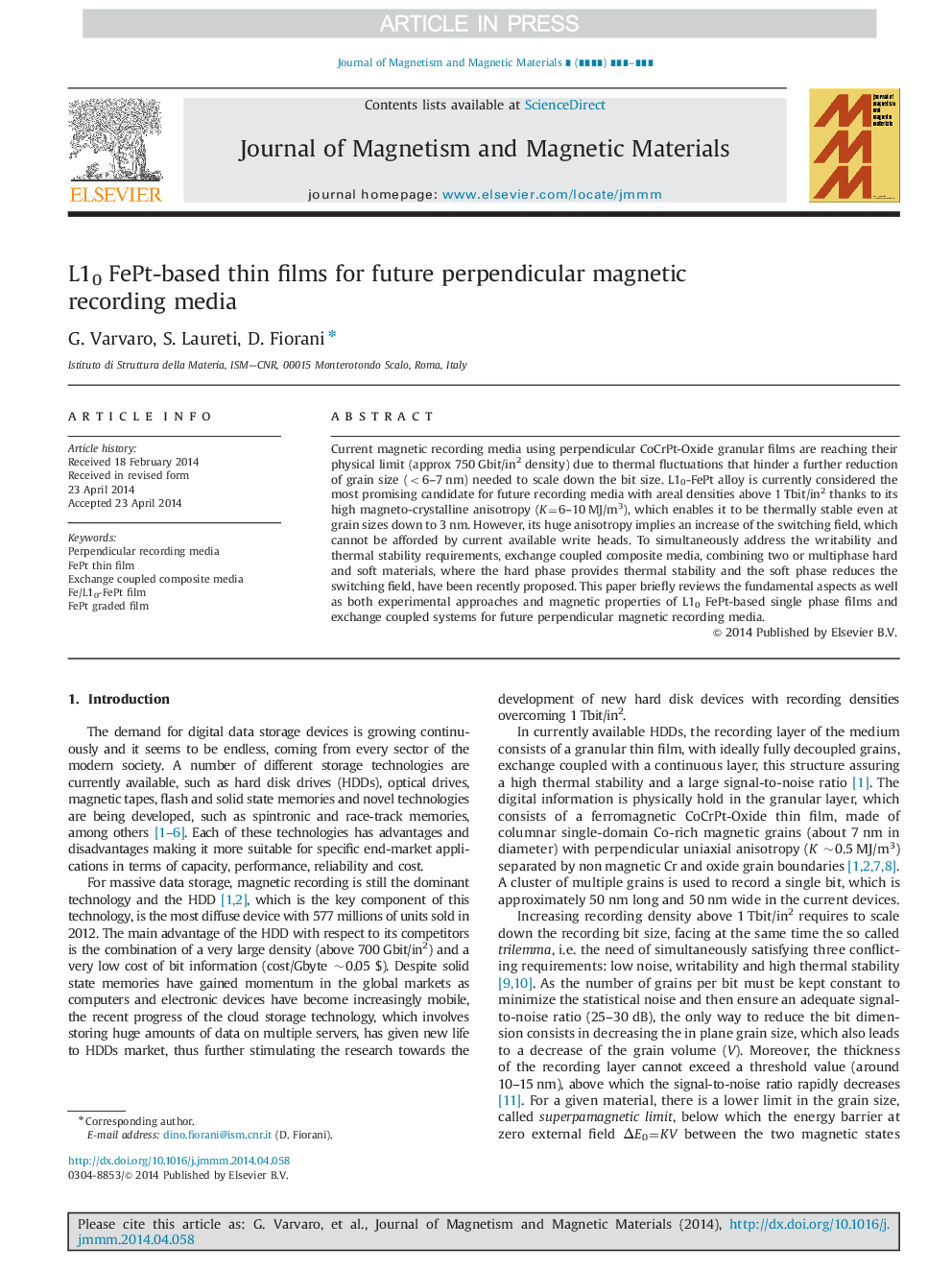| Article ID | Journal | Published Year | Pages | File Type |
|---|---|---|---|---|
| 8157286 | Journal of Magnetism and Magnetic Materials | 2014 | 6 Pages |
Abstract
Current magnetic recording media using perpendicular CoCrPt-Oxide granular films are reaching their physical limit (approx 750Â Gbit/in2 density) due to thermal fluctuations that hinder a further reduction of grain size (<6-7Â nm) needed to scale down the bit size. L10-FePt alloy is currently considered the most promising candidate for future recording media with areal densities above 1Â Tbit/in2 thanks to its high magneto-crystalline anisotropy (K=6-10Â MJ/m3), which enables it to be thermally stable even at grain sizes down to 3Â nm. However, its huge anisotropy implies an increase of the switching field, which cannot be afforded by current available write heads. To simultaneously address the writability and thermal stability requirements, exchange coupled composite media, combining two or multiphase hard and soft materials, where the hard phase provides thermal stability and the soft phase reduces the switching field, have been recently proposed. This paper briefly reviews the fundamental aspects as well as both experimental approaches and magnetic properties of L10 FePt-based single phase films and exchange coupled systems for future perpendicular magnetic recording media.
Related Topics
Physical Sciences and Engineering
Physics and Astronomy
Condensed Matter Physics
Authors
G. Varvaro, S. Laureti, D. Fiorani,
